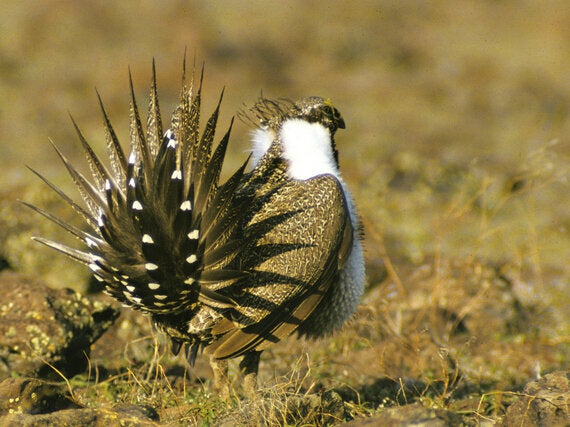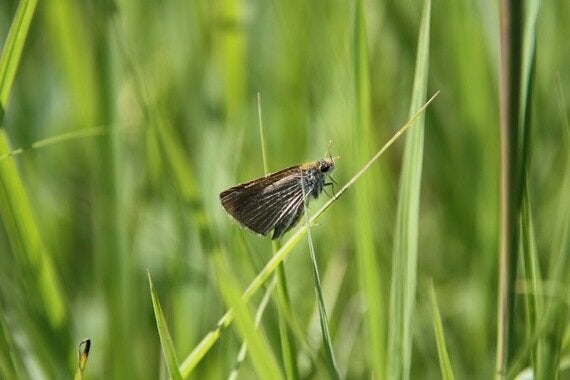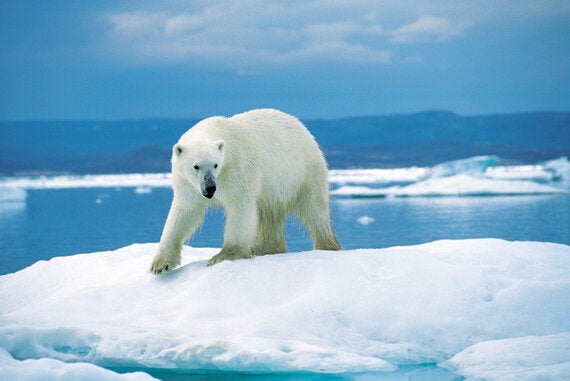
One of the most powerful tools of nature conservation in the 21st century is our ability to put the protection of Canadian species into a global context. By documenting Canadian species that are not just rare in Canada, but rare everywhere, we can better understand the role of Canadian conservation efforts in preventing global species extinctions.
Conservation Data Centres (CDCs) are a network of regional centres, established by NatureServe in 1974, to track information on species. CDCs now extend to all Canadian provinces and territories, and across the U.S. and many Latin American countries. Using information on threats, population numbers and habitat condition from across a species' range, NatureServe is able to identify species that are globally rare and at risk of extinction.
In April 2017, the NatureServe Canada network released a report that highlights globally rare species that live here in Canada. The report, On Guard For Them: Species of Global Conservation Concern in Canada, identifies 569 Canadian species (including sub-species and varieties) that are globally rare. These are species for which Canada has to play a leading role in their conservation.
By far the province with the greatest number of globally rare species is B.C., at more than 230, with both Ontario and Quebec each having more than 100. However, globally rare species occur across the country and many co-occur on the landscape, their rarity driven by specific geographies. Canadian "hotspots" of globally rare species include the St. Elias Mountains in the Yukon, eastern Vancouver Island, eastern Rocky Mountains, southern Ontario and St. Lawrence Valley, and Gaspésie in Quebec.

These Canadian plants and animals are globally rare because they have restricted ranges, small numbers and declining populations, or face imminent extinction due to human activities. For many unfortunate species, several of these factors are occurring all at once.
Protecting rare species is one of the fundamental drivers of nature conservation. Many of the pioneering conservation projects in Canada were sparked by concerns about species loss. These efforts focussed on animals that at one time had been common, but had declined rapidly. For example, Elk Island National Park was established in 1913 to conserve elk and, later, bison. Corossol Island Migratory Bird Sanctuary was created in 1937 to protect colonies of common eider, and the Canada-U.S. Migratory Bird Convention of 1917 was created to put a halt to drastic declines of many bird species. In 1977, the Committee on the Status of Endangered Wildlife in Canada was established to identify species that are at the greatest risk of being lost from Canada. Expanding our conservation efforts to include globally rare species can put Canada on the leading edge of preventing species extinctions.
Some globally rare species are widespread, but have been experiencing sharp declines throughout their entire range. This includes several species of bats that have been decimated because of white-nose syndrome, and grassland birds, such as Sprague's pipit, greater sage-grouse and mountain plover, that have all experienced population declines of approximately 80 per cent since 1966, primarily due to habitat loss.

Other species are globally at risk because of high threats to their population and habitat. Polar bears are threatened by declining sea ice. The black-footed albatross is at risk due to ocean pollution, fishing practices and storm surges. Whitebark pine, a high-elevation mountain species, is threatened by an introduced fungus and climate change.
The Nature Conservancy of Canada (NCC) plays a critical role in protecting habitat for many of Canada's globally rare species. This work is supported by Environment and Climate Change Canada through the Natural Areas Conservation Program. Although our understanding of the status and distribution of globally rare species in Canada is still emerging, NCC has been working to protect habitat for these species for many years. Currently, NCC is protecting and managing the habitat for 108 globally rare species.
For species with a small global range, NCC's habitat protection and management projects are critical for their survival. This includes NCC projects to protect habitat for the copper redhorse in the Richelieu River of Quebec, Ontario's Lake Erie watersnake, the Gulf of St. Lawrence aster in New Brunswick, eastern mountain avens in Nova Scotia, the Poweshiek skipperling in Manitoba's tall grass prairies and the Grand Coulee owl-clover in south-central B.C. For the Cain's screw moss on the alvars of the Carden Plain in Ontario, NCC and the Couchiching Conservancy are protecting the entire known global range of this species.

Monarch butterfly (Photo by the Nature Conservancy of Canada)
For some globally rare species, place-based conservation is part of the solution, but won't solve all of the underlying causes of population decline or potential threats. Protecting denning sites for polar bears is important, but this won't bring back the sea ice where they hunt. We must conserve nesting sites for piping plovers, but they need their wintering grounds along the Gulf of Mexico protected as well. NCC has protected key areas for monarch butterfly and Sprague's pipit, but these efforts need to be complemented by healthy working landscapes in Canada. The conservation of these species will require collaboration, cooperation and focus on key areas across Canada and elsewhere.
As a northern land that was mostly covered with thick glaciers only 10,000 years ago, Canada is not as species-rich as southern nations. Yet the conservation of these globally imperilled Canadian plants and animals is essential to protecting the richness of global species diversity. Knowledge about our Canadian plants and animals that are globally rare can help us implement key conservation actions and ensure a future for these species for Canadians, and for the biodiversity of the planet.
The post originally appeared on the Nature Conservancy of Canada's blog, Land Lines.
Follow HuffPost Canada Blogs on Facebook